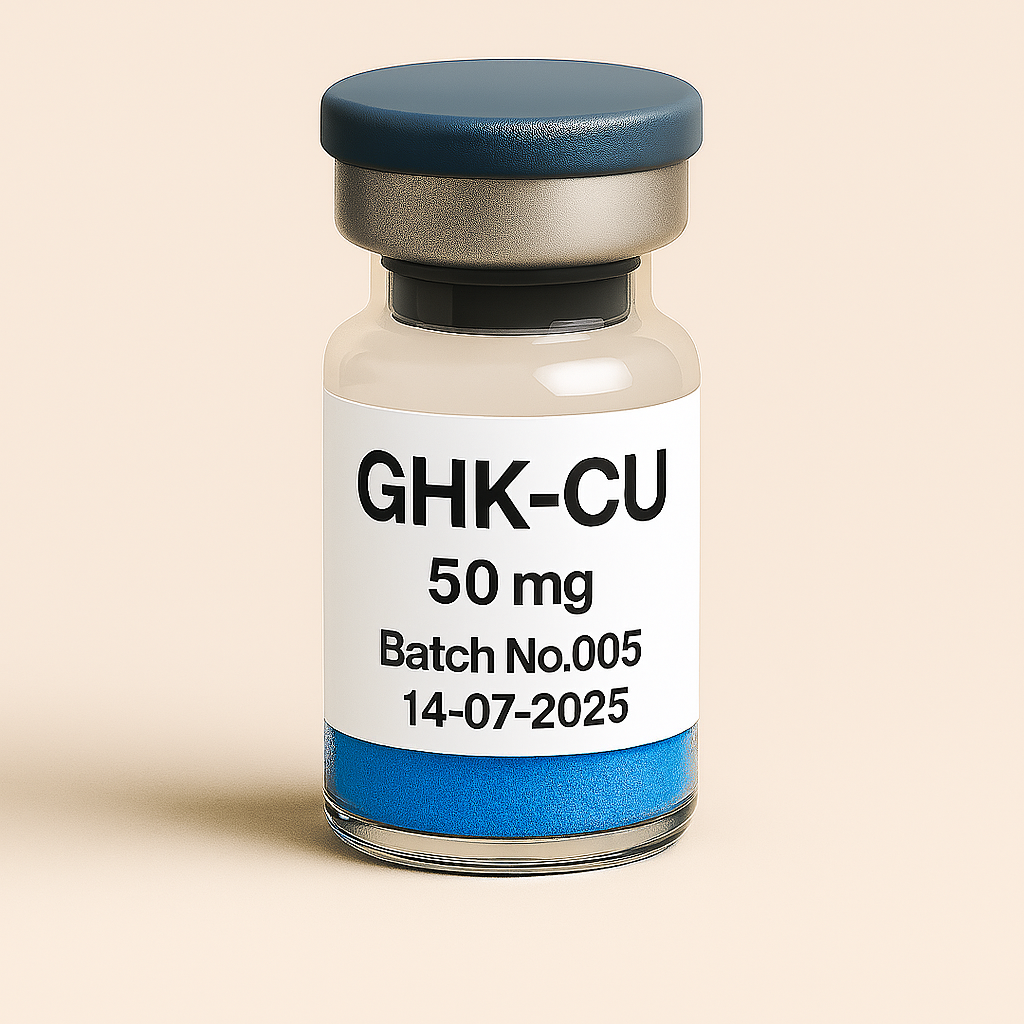M
Michael Bayer Fast replacement of broken vial from a previous shipment, superb customer service

GHK-CU 50mg vial
현재 픽업 사용 불가
NOT FOR HUMAN CONSUMPTION
GHK-Cu stands for Glycyl-L-Histidyl-L-Lysine-Copper(II), a naturally occurring copper-binding tripeptide found in human plasma, saliva, and urine. It was first discovered in 1973 by Dr. Loren Pickart. The "Cu" in GHK-Cu refers to copper ion (Cu²⁺), which is essential for many enzymatic and regenerative processes in the body.
GHK-Cu has a broad range of regenerative, anti-inflammatory, antioxidant, and tissue-repairing properties and is widely studied in the fields of cosmetic science, wound healing, and anti-aging medicine.
GHK-Cu binds to and transports copper to cells, where it:
Activates Tissue Remodeling
Stimulates production of collagen, elastin, glycosaminoglycans, and other extracellular matrix (ECM) components.
Promotes Gene Expression
Regulates over 4,000 human genes, with a balance of upregulating regenerative and protective genes and downregulating inflammatory and degenerative ones.
Antioxidant & Anti-Inflammatory Effects
Reduces oxidative stress and suppresses inflammatory cytokines.
Stimulates Stem Cell Proliferation
Encourages the growth of fibroblasts and keratinocytes, which are key to wound repair and skin renewal.
Enhances Copper-Dependent Enzyme Activity
Essential for enzymes like lysyl oxidase (for collagen cross-linking) and superoxide dismutase (for antioxidant defense).
Increases skin elasticity, thickness, and firmness
Reduces fine lines, wrinkles, and hyperpigmentation
Enhances skin hydration and barrier repair
Stimulates dermal papilla cells in hair follicles
Encourages thicker, denser, and healthier hair
Used in topical solutions for androgenic alopecia and hair thinning
Accelerates wound closure and scar reduction
Promotes angiogenesis (new blood vessel formation)
Effective in burns, diabetic ulcers, and post-surgical recovery
Reduces chronic inflammation
Protects against free radical damage and environmental stressors (e.g., UV light)
Liver and lung regeneration
DNA repair and protection
Anti-cancer potential (via gene regulation and tissue normalization)
Serum/Cream Concentration: 0.05% to 0.5% GHK-Cu
Applied once or twice daily for skin or scalp benefits
Subcutaneous injection: ~1–2 mg daily or several times per week
Oral supplements: Not widely available or bioavailable
⚠️ Injectable and oral use are not FDA-approved for therapeutic applications and should only be used under medical or research supervision.
Well-tolerated in topical use
Rare allergic reactions (rash, redness)
Injectable use may cause local irritation; systemic effects are largely unknown due to limited human studies
| Feature | GHK-Cu | BPC-157 | Thymosin Beta-4 | Argireline |
|---|---|---|---|---|
| Main Use | Skin, Hair, Repair | Gut & Tissue Repair | Wound Healing | Wrinkle Reduction |
| Administration | Topical / Injectable | Injectable / Oral | Injectable | Topical |
| Anti-Aging | ✓✓✓ | ✓✓ | ✓ | ✓✓ |
| Anti-Inflammatory | ✓✓✓ | ✓✓✓ | ✓✓✓ | ✓ |
Pickart, L., & Margolina, A. (2018). GHK-Cu may prevent oxidative stress in skin by regulating copper and gene expression. Cosmetics, 5(1), 11.
Pickart, L. (2009). The human tri-peptide GHK and tissue remodeling. Journal of Biomaterials Science, Polymer Edition, 20(12), 1683-1706.
Borkow, G., & Gabbay, J. (2009). Copper, an ancient remedy returning to fight microbial, fungal and viral infections. Current Chemical Biology, 3(3), 272-278.